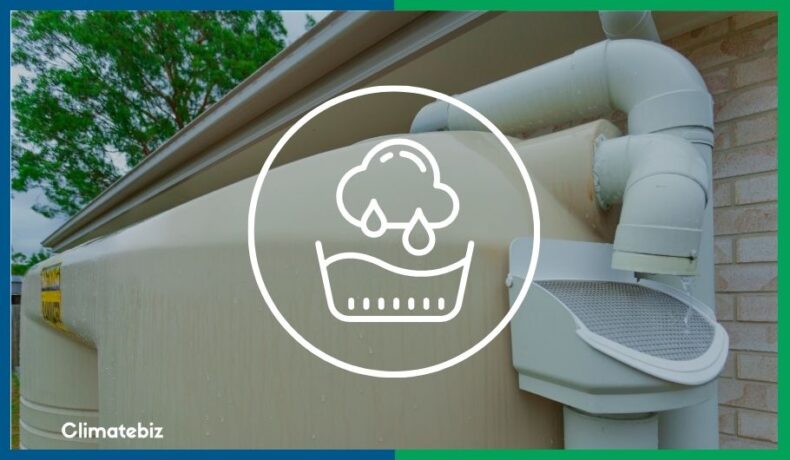A rainwater collection system is at the heart of collecting rainwater. While you can manage your rainwater in any way you please, having a system makes it so much easier.
Systems consist of interconnected parts. A rainwater system collects rain, stores it, and allows you to use it later.
As water becomes a scarcer resource, you may want to think about installing a system in your garden; it would save you water and money. Not to mention that collecting stormwater helps protect the environment.
Ultimately, if you’re looking for a way to make your home more sustainable, building a rainwater system is the way to go.
Table of Contents
What Is A Rainwater Collection System?

Rainwater collection is a way to capture the rainwater off the roof of your home; building a rainwater collection system will save you water and your money.
Three Stages of Rainwater Collection Systems
Typically, these systems consist of three stages: Collect – Store – Use
Collect
Rainwater collection systems are designed to capture as much water as possible. When rain hits an impermeable surface, it runs off into stormwater drains. The ‘collect‘ part of the system catches this water instead of flowing down the drain.
Store
The rainwater then flows into a storage tank via gravity. This is the ‘store‘ part of the system. There, it remains clean until you are ready to use it.
The storage tanks can be anything from household buckets to industrial storage tanks; this depends on your system’s size and how much water you’d like to catch.
Use
The final stage of a rainwater collection system is to ‘use‘ the water.
Rainwater is one of the most diverse alternative water solutions. You can use it for anything in your home, as long as your filter it accordingly.
Some uses for rainwater are:
- Washing machines and Dishwashers
- Cooking water
- Flushing toilets and taking showers
- Drinking (When filtered properly)
What Are The Different Types of Rainwater Collection Systems?
The versatility of a rainwater system is impressive. As previously mentioned, you can use it for just about anything in your home. There are three main types of rainwater collection systems:
- ‘Dry’ Systems
- ‘Wet’ Collection Systems
Barrel Systems
Barrel systems are the most straightforward system to install. By simply shortening your downpipe and placing a barrel underneath, you’ve created a collect and store system.
Rainwater barrels are readily available and found at garden centers and some hardware stores.
Due to their compact design, you can place them under almost all your downpipes.
A full 100-gallon barrel can water about 160 sq. ft. of your garden.
However, rainwater barrels have some negatives. They can only store a limited amount of water and can easily overflow.
‘Dry’ Systems
Despite its name, this system still handles rainwater. This system’s name comes from the fact that its plumbing dries when there is no rain.
There’s not a massive difference between barrel systems and dry systems. The most significant difference is the storage capacity and the ability to build a more extensive rainwater collection system.
A medium-sized storage tank can contain an average of 1580 gallons. That’s roughly 980 sq. ft. of garden irrigation.
Additionally, dry systems are substantially more complicated. They include more elements to ensure cleaner water, such as a first-flush diverter and multiple filters.
These systems need to be placed near your home and only connect to one or two downpipes. Unfortunately, this means that while they can store more water, they’re still not taking full advantage of your home’s runoff.
‘Wet’ Systems
Wet systems pipes are always wet — well, mostly.
These rainwater collection systems capture all the runoff from your site and divert it into a storage tank. The tank is located away from your home and needs to be placed lower than the lowest gutter.
The system connects to all your downpipes, which flow into a central pipe connected to the tank. This is the collect part of the system. Thanks to gravity, the water flows into the tank with no pump necessary.
Although most of the water flows into the tank, some remains in the central pipe, hence why the system is called a ‘wet’ system.
Next is the storage tank. These tanks are the same as the tanks you’ll find in a dry system though they can be much larger.
Since a wet system can collect all your runoff, you will need a tank of 2640 gallons or more.
The tank connects to an overflow valve and multiple filters for water quality. You can then rig the system to fill up your geyser and supply your home with cold water.
How Do Rainwater Collection Systems Work?
Systems always consist of different parts that work together. Rainwater collection systems are no exception. While small rainwater systems consist of 3 elements, the most advanced systems have several more.
Using the three main parts, collect – store – use, we’ll break down all the components of a rainwater collection system.
| Collect | Store | Use |
| Gutter | Tank Screen | Pump |
| Debris Screen | Storage Tank | Water Filter |
| First-flush Diverter | Overflow Valve | Outlet |
Let’s take a look at these elements in greater detail:
Gutter
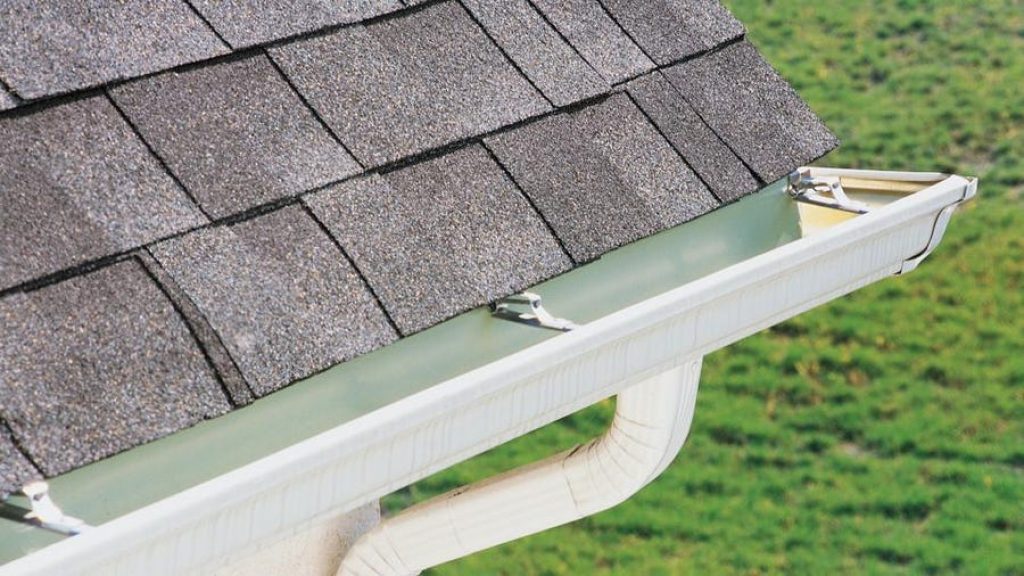
Source: Forbes
A gutter is a plastic or galvanized steel u-shaped trough that runs along the edge of your roof. Gutters are made to catch rainwater and divert it to your downpipes.
Gutters can easily be clogged with leaves and other dirt, especially if you have a lot of trees in your yard.
Almost all homes have these built-in, but you can easily buy them from a hardware or home improvement store if you don’t.
Without this element, you won’t be able to catch the runoff from your roof.
Debris Screen
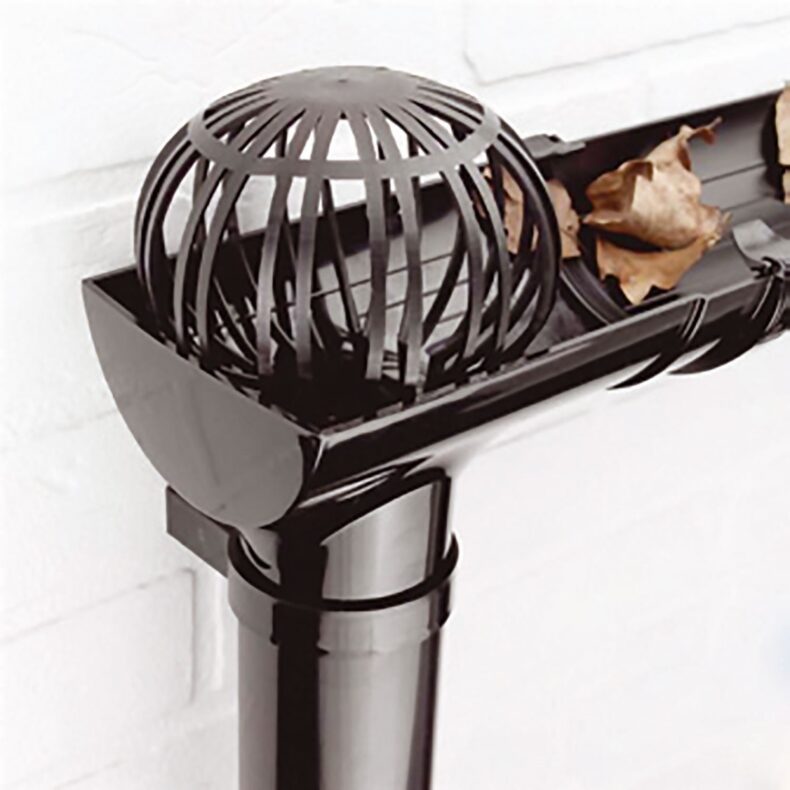
Source: Umoon productions
Debris screens or downpipe leaf traps prevent leaves and large debris from entering your downpipe.
This element is essential as it’ll stop any large pieces of debris from clogging your downpipe and your first-flush diverter.
However, it isn’t typically found in existing gutters, so you’ll have to purchase one. However, they are readily available and easy to find in home improvement stores.
First-Flush Diverter
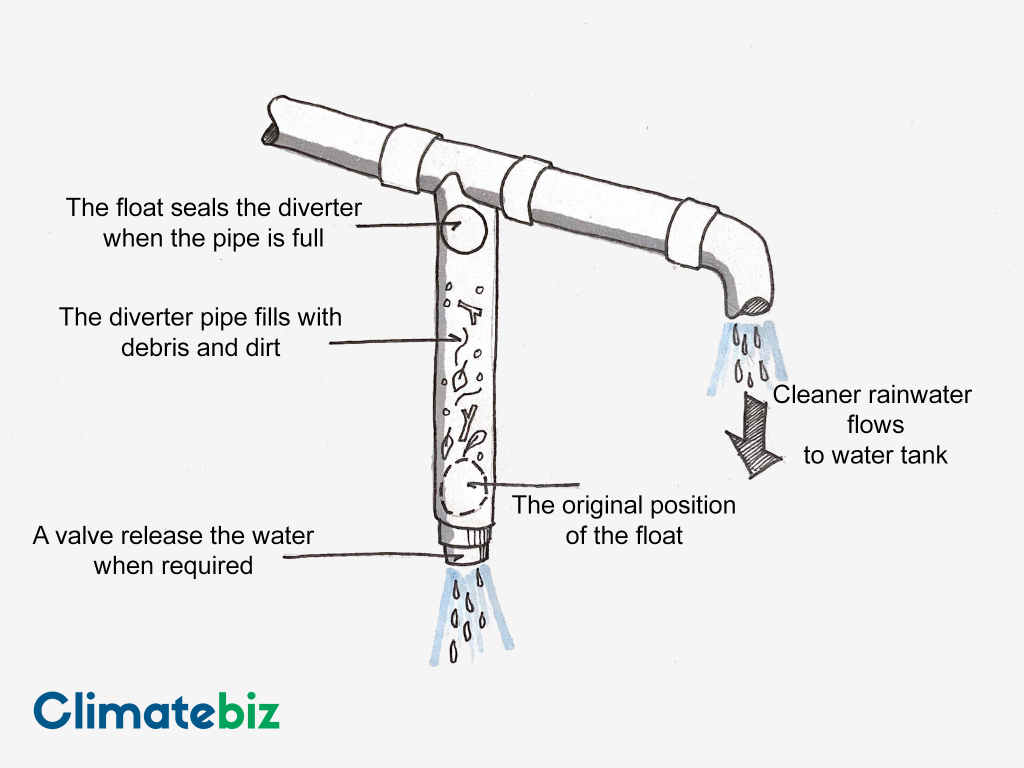
First-flush diverters are an intriguing element; they capture the first rainfall, fill up and then allow the rest of the rain to enter the system.
They do this by using a floating stop; the stop rises as the rain fills the diverter. The stop prevents more water from entering the diverter when the diverter is full.
First-flush diverters are essential because the first bit of rain is filled with dirt. Dust and dirt often settle on gutters, and when it rains, the water picks it up. The diverter catches this water and separates it from the rest of your rainwater system.
While this element isn’t essential, we highly recommend it if you plan to use your rainwater for indoor use.
Tank Screen

Source: homeinsulations
Sometimes smaller pieces of debris manage to escape the first screen and the first-flush diverter. In these instances, the tank screen stops these tricky pieces and prevents them from entering your system.
Examples of small debris include small leaves, insects, and twigs.
Tank screens come in different sizes, so you’ll be able to fit one to your barrel system or your large tank system.
Storage Tank
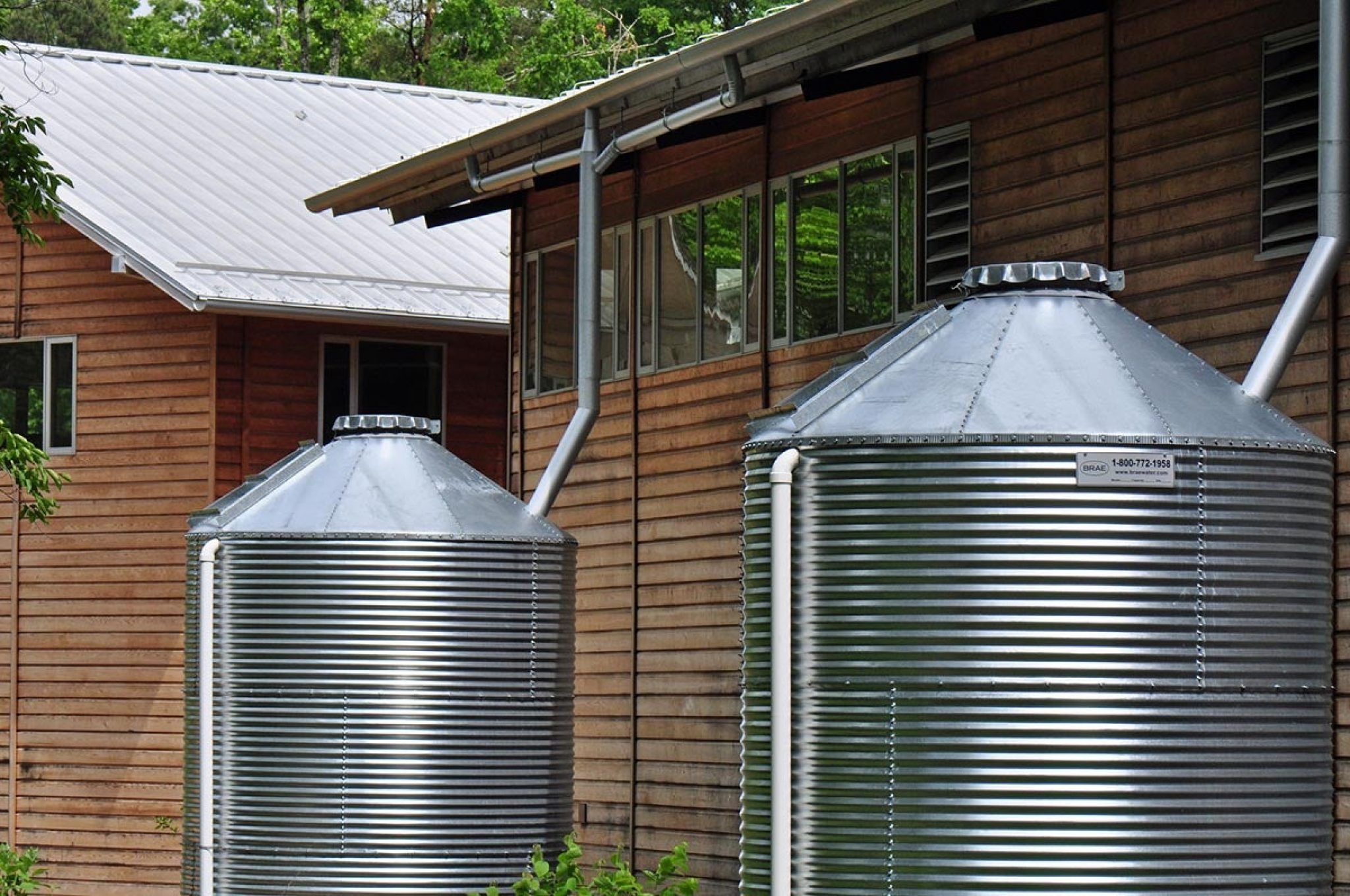
Source: bobvilla
This is the most vital part of your system. Without a storage tank, you wouldn’t be able to store your rainwater for later use.
It’s also important to note that open storage containers won’t keep your rainwater clean, making all the above steps redundant.
Storage tanks come in different sizes:
| Tank Type | Size |
| Barrel | 50 – 100 gallons |
| Small Tank | < 520 gallons |
| Medium Tank | Between 520 and 2640 gallons |
| Large Tanks | 2640 + gallons |
Overflow Valve
An overflow valve prevents the system from backing up if your tank fills up.
When the tank reaches a certain level, the water flows out of this valve and into the drain or your garden.
The valve is usually a one-way valve to prevent any insect from entering the tank and contaminating the water.
Often the overflow valve is used to replenish water tables or natural wells.
Pump
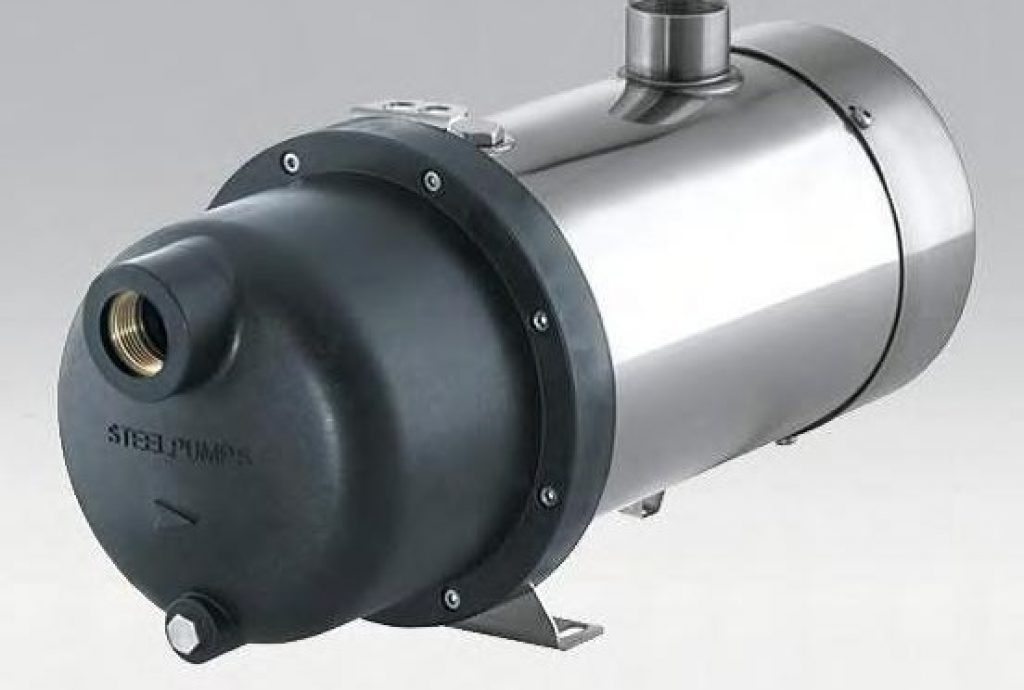
Source: Rainbank
Now that your storage tank is set up, you can either attach a small hose or a pump. Although, you’ll only need a pump if you plan to use the water for irrigation or household use.
If you plan to use the water for manual watering, you can skip to the outlet section.
The pump will allow you to have a pressurized water system that connects to an irrigation system or your home.
A simple centrifugal pump will do the trick. These standard pumps can cost anywhere between $100 – $1000, depending on the system size and desired water pressure.
Water Filter

Source: thespruceeats
There are three types of filters that you can install into your rainwater system. These are an irrigation filter, a sand filter, or a membrane filter. The type of filter you use depends on what you plan to use the water for.
- An irrigation filter — if you’re wanting to link your rainwater system to an irrigation system.
- A sand filter — you’ll use a sand filter if you’re only planning on using the water for cleaning.
- A membrane filter — only if you want to use the water for cooking or drinking.
Membrane filters are the most costly and will need to be changed regularly. On the other hand, a sand filter only needs to be checked every five years.
Outlet

Source: puffycarrot
The final part of this section is how you’ll use the rainwater. Rainwater is one of the most versatile alternative water sources. It can be used for cooking, watering, showering, and even drinking; the choice is yours.
You can either connect a garden hose straight to your storage tank or a fully fledge irrigation system.
You can connect it to your dishwasher or washing machine if you like. You could also hook it up to your toilet supply, saving you water and money.
How Much Do Rainwater Collection Systems Cost?
As always, the cost of your rainwater collection system will depend on the type of system you choose. A rainwater collection system can cost anywhere from $120 to $11,600.
It’s also important to remember that you can either get a company to install your system or build a DIY system. Of course, making your own system would be the cheaper option as no installation costs are necessary.
Barrel System
A barrel is the cheapest system you can get; it can cost between $120 and $160. However, if you opt to install a tank screen, you can add $15 per barrel.
Simply shorten your downpipe with your preferred cutting tool and place a barrel underneath.
‘Dry’ System
‘Dry’ systems are more complicated and generally need all the above elements. A dry system can cost between $790 and $2000.
The following table breaks down the prices:
| Element | Price |
| Gutter | Already installed |
| Debris Screen | $7/downpipe |
| First-flush Diverter | $30 |
| Tank Screen | $15 |
| Medium Storage Tank | $1,600 |
| Overflow Valve | $16 |
| Pump | $100 |
| Filter | $200 |
| Total | $1968 |
‘Wet’ System
Wet systems are the most expensive and complicated systems to install; expect to pay between $8000 and $11,000. However, while the system is costly, it offers the most returns.
The following table breaks down the prices for a wet system for a 2,500 sq. ft. roof:
| Element | Qty | Price |
| Gutter | 5 | Already installed |
| Debris Screen | 10 | $280 |
| First-flush Diverter | 5 | $150 |
| Tank Screen | 1 | $45 |
| Storage Tank System | 3 | $6,600 |
| Overflow Valve | 2 | $32 |
| Pump | 1 | $1000 |
| Filter | 2 | $548 |
| Tank Gauge | 3 | $120 |
| Piping + Plumbing | This depends on the system. | |
| Total | $8775 |
How Long Do Rainwater Collection Systems Last?
Each element has a different lifespan and requires different levels of maintenance. In short, a rainwater collection system can last up to 30 years.
However, while the elements might last that long, quite a bit of maintenance is required in between.
Firstly, the gutters will constantly need cleaning to prevent blockage. Secondly, all the screens will need to be cleaned after every rainy day.
The valves will need to be checked at least once a year, as the washers and rubbers can deteriorate.
Many elements may deteriorate over time and will need to be replaced during the system’s lifespan. For example, the first-flush diverter might need to be replaced every five years as the materials deteriorate.
Additionally, if you’re using a sand filter, the sand will need to be replaced every five years. In contrast, membrane filters must be changed every 3 – 6 months.
Which Is The Best Rainwater Collection System?
Determining which rainwater collection system is best is tricky; each system comes with its pros and cons.
However, a ‘dry’ system is often the most common for those wanting to commit to rainwater collecting.
A dry system offers more extensive storage space at a reasonable price. In addition, you’ll be able to use the water for the basics, like watering your garden or connecting it to your dishwasher.
If you’re not sure about rainwater harvesting just yet, you can always opt for the barrel option. Then, once you’ve seen the benefits, you can install a more extensive system.
One of the great things about a rainwater collection system is that you can always expand it. Tanks can be interconnected, allowing for more storage space. Multiple gutters can also be joined together to catch more water.
But again, you need to choose a system that suits your needs! For example, if you want to go off the grid, you might opt for a ‘wet’ system.
Which System Is Right For You?
To determine which system you would need, you can ask yourself the following questions:
- What do I plan on using the rainwater for?
- How much rainwater would I need to do this?
- Do I have the space for a large system or only a small one?
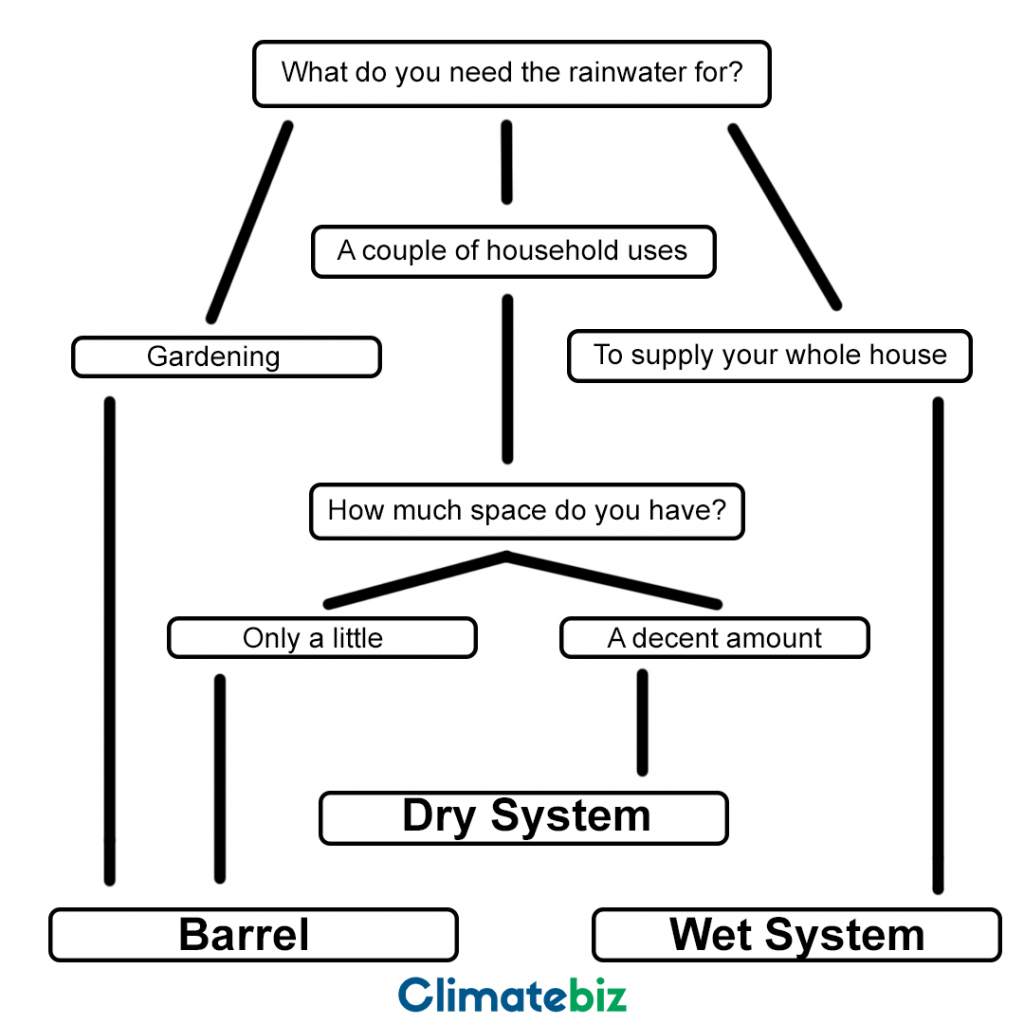
Final Thoughts
Rainwater is an untapped resource, and building a rainwater collection system is a way to capture it.
By installing a system in your garden, you can save money and prevent stormwater runoff. In addition, you can use the water collected by these systems for gardening and household use. From dishwashers to even drinking water.
Some systems can be complex, becoming expensive, while others are cost-effective.
Installing a barrel system is pretty simple, and anyone can do it. On the other hand, ‘wet’ systems are more complex and need a good deal of knowledge to build.
Each system has its benefits, and you’ve got to choose one that’s right for you.
We hope that this article gets you thinking about building your own rainwater collection system. It’s undoubtedly convinced us!

